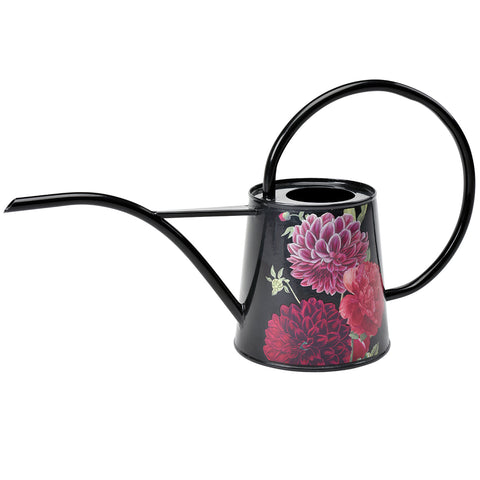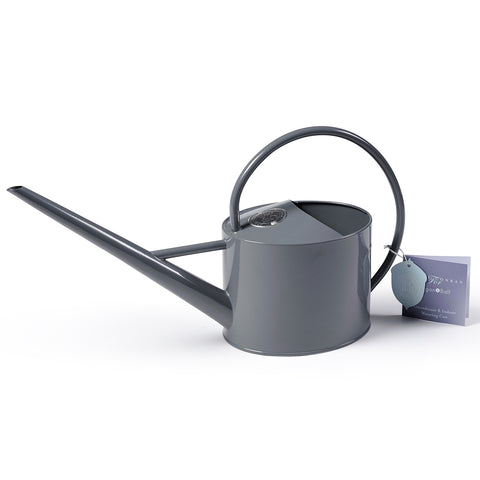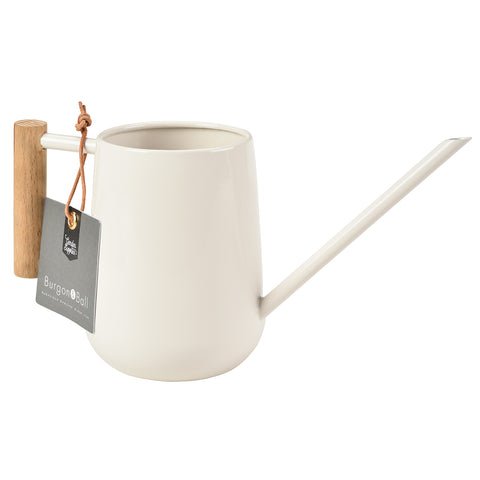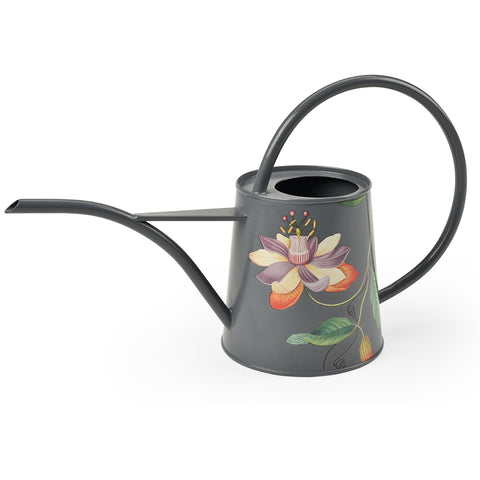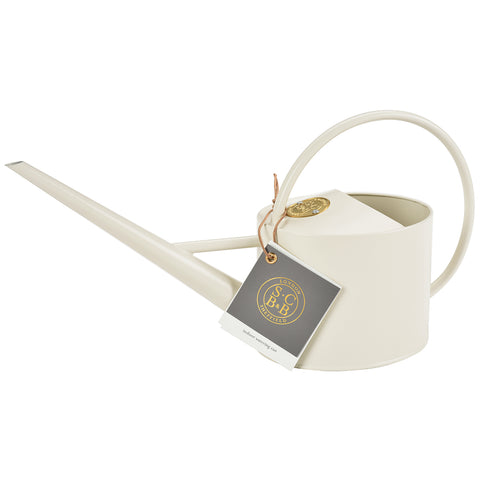
In the summer, it’s not just your outdoor plants which need more watering. Houseplants are also taking advantage of the increased hours of daylight and steady warm temperatures (no overnight dips when the heating goes off!) to do some serious growing – and they need plenty of water to do it.
As a rule of thumb, houseplants need to be watered more often in spring and summer, and can be left to dry out a bit more in the autumn and water, when they’re dormant. Water can easily be topped up, but an excess of water can’t easily be taken away, so when it comes to watering, it’s probably best to err on the side of caution until you get to know the requirements of any new plant. Around every 2-4 days in summer is a rough guide, depending on temperatures – and less frequently for cacti and succulents, perhaps once a week or so.
Most people like to keep their houseplants in a pot with holes in the base to let excess water drain away after watering. You can use either a saucer or a decorative pot cover – also called a cache pot, planter or pot sleeve - to catch the water as it drains, before tipping it away. It’s never a good idea to let your plants sit for too long in water, as it can lead to rotting and problems with fungus and mould.

A big plus of using a pot cover is that you can match it to your décor, and easily switch it for a new look. You might like to take a look at our indoor pot collection. We add new designs every year, so there’s one for every plant and for every home.
When you’re watering your plant, it’s sensible to think about the kind of environment it originates from. It is a desert plant, happiest with very little water? Is it from the rainforest, evolved to love a humid atmosphere? Understanding how it lives in the wild will help you replicate those conditions when you water, to keep it happy in your home.
Here’s a quick guide to watering some of the most popular kinds of houseplants.
Cacti and succulents
Many plants in this family benefit from regular watering during their growth season (normally summer) followed by a period of less watering during their dormant phase (normally winter). They hate being waterlogged, so ensure they’re able to drain very freely. Some people like to mix a good helping of horticultural grit into the potting mix to ensure good drainage. Using a top dressing (‘mulch’) of grit will help with drainage and also reduce splashes onto the plant during watering.

Tropical plants
Many tropical plants like to get their foliage wet, as well as their compost, so you don’t need to be quite so careful when watering these. Plants like the much-loved Boston fern, which comes from humid areas and swamps in tropical zones, enjoy a good dousing, so it doesn’t matter if you get water on the foliage. Do be careful not to just wet the leaves and leave the compost dry, though. Even the delicate-looking asparagus fern will enjoy a daily misting, and compost that’s kept well-watered.
Furry-leafed plants
Generally speaking, plants with soft, furry foliage don’t like to get their leaves and stems too wet. African violets (Streptocarpus) are a good example – they’re native to rainforests in the mountains of eastern Africa, where they grow below the canopy of larger plants and trees, receiving little direct rainfall, although the atmosphere is very humid. Water these plants from below, by sitting them in their pots in a tray of water for 20 minutes.

Plants with aerial roots
Plants like orchids and Swiss cheese plants (Monstera) have aerial roots which help the plant with air absorption, propagation, stability, and nourishment. These tropical plants come from humid environments, so they’ll enjoy having their leaves and aerial roots misted regularly.

Plants with reservoirs
Plants in the striking bromeliad family, which include the pineapple and the popular flaming sword plant, are unusual in that they have their own reservoir for water. In their tropical rainforest home, this fills naturally with rainwater, and this reservoir should be kept topped up, in addition to keeping the plants’ compost moist but not waterlogged. Ideally, use distilled water or collected rainwater for the reservoir, as the plants are sensitive to the chemicals in tap water. If this is difficult, you could use tap water which has been left to stand for 24 hours, or tap water which has been boiled and then allowed to thoroughly cool.
Air plants
Otherwise known as Tillandsia, these very on-trend little plants don’t have roots as we know them, instead absorbing their water and nutrients through their leaves. Super-easy to case for, they just need a good soak in rainwater or distilled water once a week, or alternatively you can mist them two or three times a week. Do make sure there’s no water left pooling in between the leaves though, as they can be prone to rotting.
Enjoy your watering, and look forward to a summer of happy and healthy houseplants.


